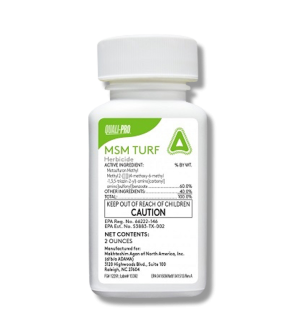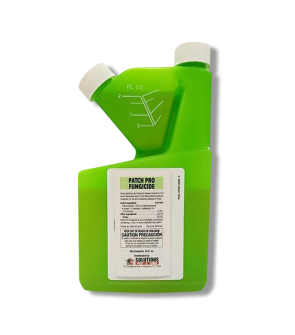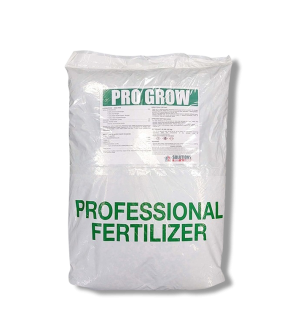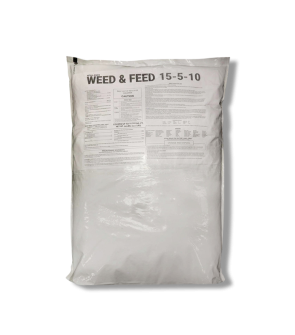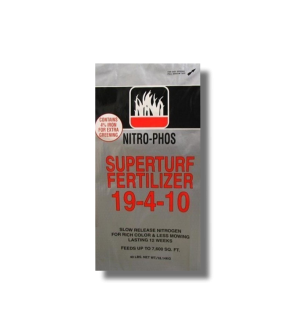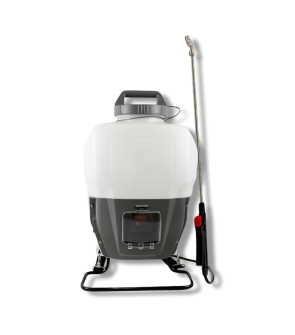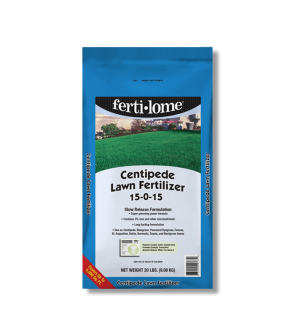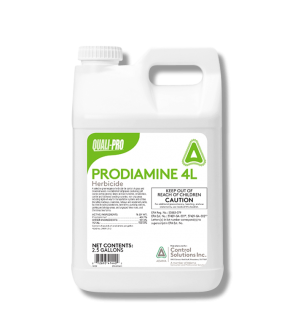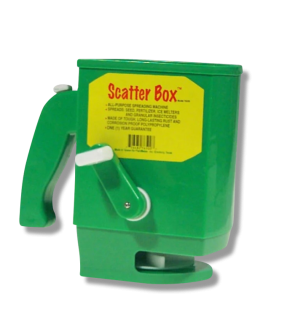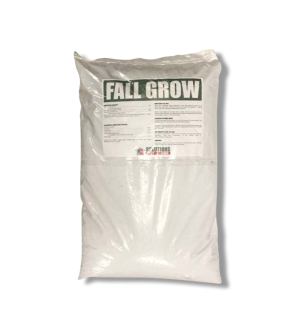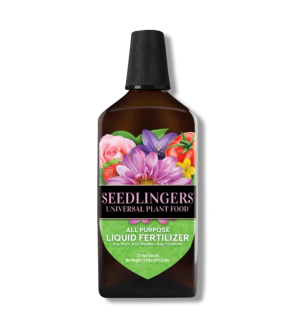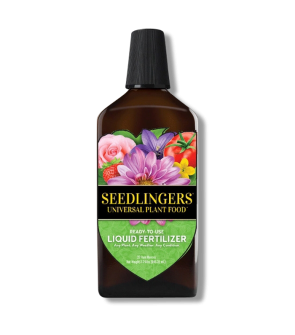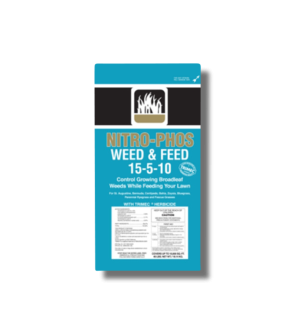Fertilizers
Most Effective Products
Fertilizers
Maintaining a lawn or garden takes a lot more than just pulling out your hose and watering or mowing from time to time. To really care for your lawn and make your yard stand out you need to give it proper nourishment. Thats where fertilizer comes in.
Fertilizer is also a helpful tool to prevent the emergence of diseases or invasive weeds. By maintaining a regular fertilization schedule, your lawn will never have to worry about unwanted pests and problems taking over.
On this page, we will share some key information about fertilizers, how to properly apply them and what our best fertilizer recommendations are for your lawn.
What Is Fertilizer?
Fertilizers are essential nutrients needed by lawns and gardens to stay healthy. They consist primarily of Nitrogen (N), phosphorus (P), and potassium (K). Fertilizers are applied to landscapes and agricultural fields to supplement the required elements found naturally in the soil and have been used since the inception of agriculture.
Benefits of Fertilizer
There are a number of reasons why you should fertilize your lawn. As time passes, your lawn tends to start depleting nutrients from the soil.
Most nutrients for your lawn are water-soluble. This means that when water comes into contact with the nutrients in the soil whether it be by rainfall or irrigation, the water will wash away the nutrients from your yard. This will leave your lawn deficient in essential nutrients that it needs which can lead to an unhealthy lawn where your grass and plants may die and lose their bright green luster.
Fertilizer will be needed in order to maintain a healthy lawn and provide those essential nutrients your lawn needs. Other benefits of a well-fertilized lawn include:
- Thick and soft feeling grass that you want to walk barefoot on.
- Durable grass that can withstand stress.
- Prevention of lawn diseases and fungus.
Types of Fertilizer

The two main ways to apply fertilizer to your lawn are either through granular or liquid application which both have their own pros and cons. Whatever you choose will be based on personal preference.
Liquid fertilizer:
- Diluted in water and spread over your grass with a liquid fertilizer applicator. This method of fertilizer is fast-acting, with results often seen in a matter of weeks. Liquid fertilizers, are also usually cheaper than granular fertilizer.
- Although they are very effective in producing results, these types of fertilizers also have a few disadvantages. Liquid fertilizers carry a higher chance of leaching when used in high dosages. They also require more repeated applications than granular and there is a higher risk of burning your grass by over-applying fertilizer.
Granular fertilizers:
- Granular fertilizers are typically applied using a rotary spreader. With their slow release and low margin for error, Granular fertilizers are recommended for most homeowners.
- These fertilizers take a bit more time to see results than liquid fertilizers but do not have to be applied as frequently as a liquid.
- There is a lower chance of the fertilizer leaching out of the soil and, because of its often slow time-release formula, there is less of a chance that you will burn your lawn by applying too much fertilizer. Despite the fact that these fertilizers are typically more expensive than liquids, their effectiveness often more than makes up for the higher cost.
Our Recommendations
- Solutions 15-5-10 Weed & Feed Granular Fertilizer with Trimec - Solutions Weed & Feed 15-5-10 is specially formulated by Solutions Pest & Lawn as a combination fertilizer and weed-killer to keep lawns weed-free and healthy. This fertilizer is made with Trimec to control numerous types of weeds, such as dandelions and clover. Solutions Weed & Feed also contains a blend of nitrogen, phosphorus, potassium and additional ingredients called a micronutrient pack, to promote health and longevity to turfgrass.
- Pro-Grow 19-4-10 Granular Fertilizer Summer Blend -Pro Grow Summer Blend 19-4-10 Fertilizer is a Solutions Pest & Lawn product made for lawns and turf that endure hot and humid summer weather. It works well with St. Augustine or Bermudagrass. Pro Grow Summer Blend 19-4-10 Fertilizer comes with a micronutrient package mixed in which promotes vibrant green grass without promoting excessive growth so that the lawn can be enjoyed without having to mow as often. Pro Grow Summer Blend 19-4-10 is the perfect product to have in your summer lawn care program.
User Guide
Tools Needed
- PPE
- Selected Fertilizer
- Granule Spreader (For Granular Fertilizers)
- Pump, hose-end or Backpack Sprayer (For Liquid Fertilizers)
Step 1: Choose your Fertilizer method.

The two main ways to apply fertilizer to your lawn are either through granular or liquid application which both have their own pros and cons. Whatever you choose will be based on personal preference.
Depending on what you choose, you may need equipment like a spreader or hose to carry out fertilization. Knowing what type of grass you have can also help you in selecting the right fertilizer. If you are unsure of your grass type, contact us and send us a picture and we can identify your lawns grass type for you.
Step 2: Choose the right time to fertilize.
When you should fertilize your lawn often depends on the amount of time and money you want to spend on your lawn, the type of grass you have, and the region of the country you are in. We recommend a light fertilization in spring and early summer and a heavy application during the fall season.
Step 3: Calculate The Square Footage Of Your Lawn

Determine how much Fertilizer you will need by first calculating the square footage of the area you wish to fertilize. To do this, measure (in feet) and multiply the area length times the width (length x width = square footage).
The label of the fertilizer you choose will give you the recommended application rate. Solutions 15-5-10 Weed & Feed, for instance, recommends applying 3.2 to 4.0 pounds of product per 1,000 square feet of turfgrass. So for example, if you calculated the size of your yard to be 2,000 square feet, you would need to apply 6.4 to 8.0 pounds of Solutions 15-5-10 to your yard.
Step 4: Prepare the equipment.
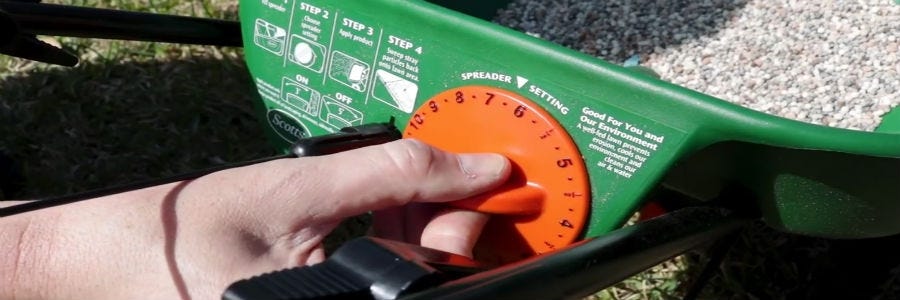
Prepare your granule spreader If you are using dry fertilizer, or connect the fertilizer to your hose-end sprayer if you are using liquid fertilizer. We advise you to please use a spreader and not apply fertilizer to your lawn by hand. There are a few options when it comes to spreaders.
A broadcast or rotary spreader is an excellent option for larger lawns, especially if the spreader has a side-shield feature. This feature makes application along the lawn's perimeter easy by shutting off half of the spreader flow, so the product is only applied on the turf and not on non-lawn areas like the sidewalk or driveway.
Make sure your spreader is properly calibrated according to the manufacturer label instructions. Spreader settings will be on the label for different spreader models so you can adjust based on which spreader you have.
Step 5: Apply The Fertilizer

Begin fertilizing by walking at a normal pace to ensure an even spread of fertilizer across your entire yard. Depending on the type of fertilization method and equipment you are using, you may need to pass through your lawn more than once to ensure the fertilizer is spread evenly.
Be cautious not to spread too much in one area or else your lawn may be chemically burned.
Things To Consider
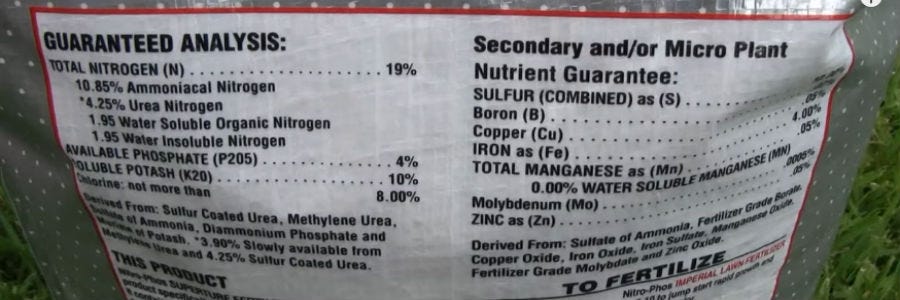
It's always best to do the research on your particular ornamental turf variety to determine N-P-K, nutrient ratio requirements for your specific turfgrass so that a well-balanced and consistent fertilizer program can be implemented.
Supplemental nutrients such as Iron (Fe) will help to sustain the green color during periods of excessive rainfall or overwatering which contributes to leaching out and deficiency of iron in the soil. We offer a 19-4-10 Pro-Grow fertilizer that has a 4% Fe content to help counteract this potential effect.
Granule fertilizer that has no herbicide or insecticide included is labeled to be applied according to the largest nutrient number on the bag. Combination granular fertilizer that has herbicide or insecticide included such as our 15-5-10 Weed & Feed, is labeled to be applied at the rate of the (active ingredient) of the herbicide or pesticide that is being applied.
During the active growing season, a high nitrogen fertilizer should be applied. A higher phosphorus and potassium analysis like our 8-12-16 Fall Grow fertilizer is needed when the turf is going into dormancy to help the grass maintain and establish a healthy root system.
When applying granular Weed & Feed materials you will need to take special care to avoid broadcasting the product into ornamental beds that could be harmed by a selective herbicide application. Also special care should be taken to sweep up or blow off any material that falls onto concrete areas, such as driveways, sidewalks or patios as these materials have some potential to stain these surfaces if they are in place.
When applying a Weed & Feed product with a herbicide containing a 2,4-D material like the 15-5-10 Weed & Feed, the grass should be watered to allow this leaf absorbed herbicide to contact and affect the invading weeds.
Key Takeaways
What is Fertilizer?
- Fertilizer is an essential component of lawn care by providing lawns with essential nutrients to help combat weed, disease and environmental stress.
How to Choose The Right Fertilizer
- Choose what fertilizer application method that is best for you. There are the standard granular fertilizers and there are liquid fertilizers. Each has its own advantages and its own special steps to follow.
- Your turf type, the region of the country you are in and the climate are all factors in determining the best fertilizer for your landscape.
How To Apply Fertilizers
- If using a granular spreader, we recommended doing two passes perpendicular to one another to ensure an even spread.
- Do not overapply and always follow the directions on the bag. If you use too much fertilizer you can burn your lawn and do a lot of damage.


